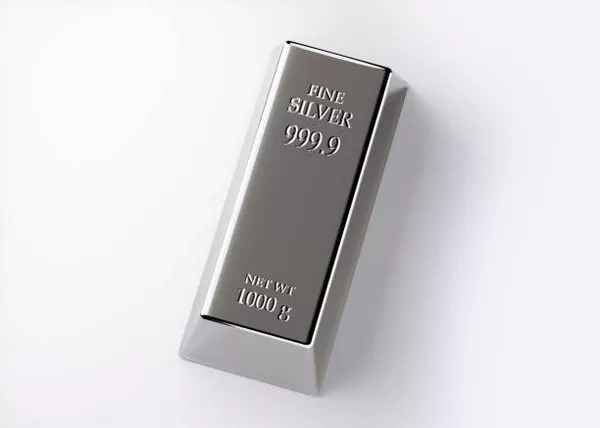Silver, often referred to as the “poor man’s gold,” has long been a staple investment for individuals seeking to diversify their portfolios or hedge against economic uncertainty. Its unique properties as both a precious metal and an industrial commodity make it a valuable asset in various sectors, ranging from jewelry to electronics to solar panels. As such, understanding the factors influencing silver prices and predicting its future trajectory is of paramount importance to investors, traders, and industry stakeholders alike.
Current Market Overview
To comprehend where silver prices may be headed in the future, it’s crucial to examine the current state of the market. As of [insert date], silver is trading at [insert current price] per ounce. Over the past year, silver has experienced [insert percentage] volatility, largely influenced by several key factors.
Factors Influencing Silver Prices
Industrial Demand: One of the primary drivers of silver prices is industrial demand. Silver’s conductivity, reflectivity, and antibacterial properties make it indispensable in various industrial applications, including electronics, automobiles, and healthcare. Therefore, any shifts in industrial production and technological advancements can significantly impact silver prices.
Investor Sentiment: Like gold, silver serves as a safe-haven asset during times of economic uncertainty. Investors often flock to precious metals as a store of value when traditional investments, such as stocks and bonds, become volatile or risky. Consequently, geopolitical tensions, inflationary pressures, and monetary policy decisions can influence investor sentiment and drive demand for silver.
Currency Movements: Silver, like other commodities, is traded in U.S. dollars. Therefore, fluctuations in the value of the dollar relative to other currencies can affect silver prices. A weaker dollar typically boosts demand for commodities, including silver, as it makes them cheaper for foreign buyers. Conversely, a stronger dollar may depress silver prices.
Supply Dynamics: The availability of silver in the market is another crucial factor impacting its price. Silver production is influenced by factors such as mine output, recycling rates, and government policies. Any disruptions in mining operations, geopolitical tensions in major producing regions, or changes in regulations can affect the supply side dynamics and, consequently, silver prices.
Macro-Economic Indicators: Economic indicators such as GDP growth, employment rates, and consumer spending also play a role in determining silver prices. A robust economy typically translates to increased industrial demand for silver, while economic downturns may dampen demand.
Interest Rates: The opportunity cost of holding silver versus interest-bearing assets like bonds is an essential consideration for investors. When interest rates are low, the relative attractiveness of precious metals like silver increases since they do not generate income but can act as a hedge against inflation.
Future Projections
While predicting the future price of silver with absolute certainty is impossible, examining current trends and understanding the underlying factors can provide valuable insights into potential price movements.
Continued Industrial Demand: The increasing adoption of renewable energy technologies, such as solar panels and electric vehicles, is expected to drive sustained demand for silver in the industrial sector. Silver’s unique properties make it an essential component in these technologies, positioning it for long-term growth.
Geopolitical Uncertainty: Geopolitical tensions, trade disputes, and geopolitical shifts can create volatility in the financial markets, driving investors towards safe-haven assets like silver. As geopolitical risks persist, silver prices may experience upward pressure.
Monetary Policy and Inflation: Central bank policies, particularly regarding interest rates and monetary stimulus measures, will continue to influence silver prices. With many central banks maintaining accommodative policies to support economic recovery, concerns about inflation may increase, boosting demand for silver as an inflation hedge.
Technological Advancements: Ongoing advancements in technology, particularly in areas such as electronics and healthcare, are expected to drive innovation and increase demand for silver. Silver’s conductivity and antimicrobial properties make it indispensable in various emerging technologies, further bolstering its long-term demand outlook.
Supply Constraints: Despite growing demand, silver production faces challenges such as declining ore grades, rising production costs, and environmental regulations. These factors could limit the growth in silver supply, potentially exerting upward pressure on prices in the future.
Environmental Concerns: The increasing focus on sustainability and environmental responsibility may drive demand for silver in green technologies such as solar panels and electric vehicles. Silver’s role in reducing carbon emissions and promoting clean energy solutions could further support its future price trajectory.
See also Is It Easy to Sell Silver? A Comprehensive Look
Conclusion
While silver prices are influenced by a myriad of factors, including industrial demand, investor sentiment, currency movements, supply dynamics, macro-economic indicators, and technological advancements, predicting its future trajectory requires a comprehensive understanding of these variables. As the global economy evolves and new trends emerge, silver is likely to remain a valuable asset for investors seeking diversification and protection against economic uncertainty. By staying abreast of market developments and conducting thorough analyses, investors can make informed decisions to navigate the dynamic landscape of the silver market effectively.


